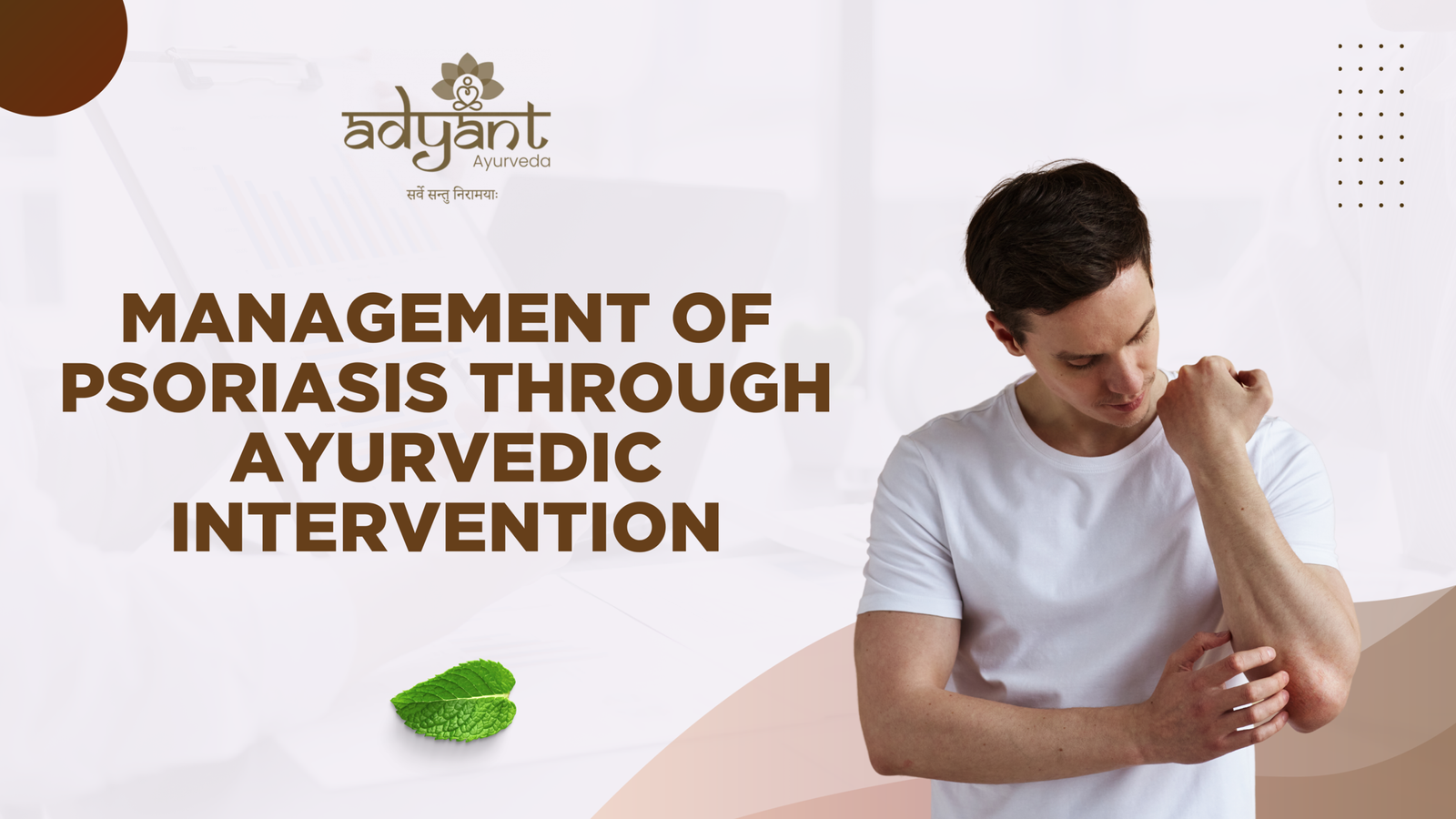Table of Contents
ToggleWhat Is the Best Ayurvedic Treatment for H Pylori?
Ayurvedic Treatment for H Pylori focuses on balancing aggravated Pitta Dosha (heat), strengthening Agni (digestive fire), clearing Ama (toxins), repairing the stomach lining, and restoring gut immunity through herbs, diet, and Panchakarma.
Instead of relying only on antibiotics—which often cause relapse or resistance—Ayurveda heals digestion (Agnimandya), calms inflammation, supports mucosal repair, and rebalances gut flora for long-term freedom from ulcer, acidity, and bloating.
Introduction to H. Pylori
H. pylori (Helicobacter pylori) is a spiral-shaped bacterium that infects the stomach lining, affecting more than 50% of the global population. While often asymptomatic, the infection can lead to chronic gastritis, peptic ulcers, and even gastric cancer if left untreated. As modern medicine struggles with rising antibiotic resistance and frequent treatment relapses, Ayurveda offers a scientifically supported, holistic alternative. Rooted in principles of digestive balance, toxin elimination (Ama pachana), and dosha correction, Ayurvedic treatment targets the root cause rather than merely suppressing symptoms.
“H. pylori affects over 50% of the world’s population, with a significant burden in Asia and developing countries.”
What is H. pylori?
H. pylori is a bacterium that colonizes the stomach, often during childhood. It disrupts the protective mucosal lining, leading to inflammation, ulcers, and increased risk of gastric cancer. The infection may remain silent or present symptoms such as:
Causes of H. pylori Infection: A Comparative View
| Modern Medical Causes | Ayurvedic Causes |
|---|---|
| Contaminated food or water | Mandagni (weak digestive fire) |
| Person-to-person transmission via saliva or feces | Pitta dosha aggravation (excess heat and acid) |
| Poor hygiene and sanitation | Viruddha Ahara (incompatible food combinations) |
| Crowded living conditions | Adhyashana (eating before previous food is digested) |
| Childhood infection | Manasika Doshas (stress-related digestive imbalance) |
| Inadequate access to clean water | Tamasic lifestyle (sedentary habits, junk food, alcohol) |
Ayurvedic Understanding of H. pylori
In Ayurveda, H. pylori infection aligns with Amlapitta and Grahani roga, conditions linked to Pitta dosha aggravation, Mandagni (weak digestion), and Ama (toxins) formation. The causative factors are:
1. Imbalance in Agni (Digestive Fire)
Weakened Agni due to improper diet or lifestyle causes undigested food and Ama, promoting bacterial overgrowth.
2. Pitta Dosha Aggravation
Pitta governs digestion and metabolism. Its aggravation leads to excess acid, inflammation, and ulceration.
3. Vata and Kapha Involvement
- Vata: Bloating, variable bowel habits
- Kapha: Mucus, sluggish digestion, white-coated tongue
4. Triggers
- Irregular meals
- Spicy, oily foods
- Stress
- Alcohol, tobacco
- Contaminated food or water
Symptoms and Ayurvedic Interpretation
| Modern Symptom | Ayurvedic Correlation |
| Acidity & Heartburn | Amlapitta (Pitta disorder) |
| Abdominal Pain | Udarashoola (pain due to Pitta/Vata) |
| Bloating | Adhmana (Vata + Ama) |
| Nausea/Vomiting | Chardi (Pitta/Kapha imbalance) |
| Irregular Bowel | Atisara or Vibandha |
| Coated Tongue | Ama accumulation |
| Fatigue | Ojas depletion |
Ayurvedic Diagnosis at Adyant Ayurveda
- Nadi Pariksha: pulse analysis
- Jihva Pariksha: tongue examination
- Agni Bala: assessing digestive strength
- Ama Lakshana: toxin evaluation
- Prakriti Pariksha: body constitution
- Diet & lifestyle assessment
Ayurvedic Treatment for H Pylori (Comprehensive Protocol)
1. Panchakarma Therapies
| Therapy | Ayurvedic Purpose | Benefit |
|---|---|---|
| Virechana (purgation) | Removes excess Pitta | Reduces acidity & ulcers |
| Basti (medicated enema) | Balances Vata | Heals bloating & irregular bowels |
| Takra Dhara | Cooling therapy | Soothes inflammation |
| Shirodhara | Stress relief | Reduces stress-induced acidity |
These therapies detoxify the gut, repair the mucosa, and stabilize digestion.
2. Herbal Formulations
- Yashtimadhu (Licorice) – heals ulcers
- Amalaki (Amla) – antioxidant, restores Agni
- Haridra (Turmeric) – anti-H. pylori, anti-inflammatory
- Neem – antimicrobial, cleanses toxins
- Guduchi (Giloy) – immune-enhancer
- Kutaja – supports gut flora, relieves diarrhea
- Curcumin: Inhibits H. pylori growth by disrupting its cell membrane (Ref: WJG 2020)
- Neem: Shown to reduce gastric inflammation and inhibit urease enzyme critical for H. pylori survival (AYU Journal, 2018)
3. Evidence-Based Clinical Case
In a case study published in IJAM (Vol 11, Issue 2), a 51-year-old woman treated with Samana Snehapana (coconut oil) for 15 days showed:
- Reduction in IgG H. pylori from 16.01 to 6.14 IU/ml
- Marked symptom relief within 3 weeks
A 2020 review in World Journal of Gastroenterology found curcumin and neem to significantly inhibit H. pylori growth and inflammation.
Why Ayurveda Works for H Pylori
Neutralizes excess acid (Pittashamana)
Repairs mucosal lining
Reduces inflammation naturally
Improves gut immunity
Reduces bacterial overgrowth without resistance
Detoxifies digestive tract (Ama Pachana)
Strengthens long-term digestive health
Home Remedies and Dosages
| Remedy | Quantity | Timing | Notes |
| Turmeric Milk | 1 cup | 1–2× daily | Avoid with other remedies in the same meal |
| Amla Juice | 1–2 tbsp | Empty stomach | Combine with honey or ginger |
| Licorice Tea | 1 cup | After meals | Avoid in hypertension |
| Neem Tea | 1 cup | Morning | Not with other bitter herbs |
| Ginger + Honey | 1 tsp each | Before meals | Boosts Agni |
| CCF Tea | 1 cup | After meals | Enhances digestion |
| Papaya Seeds | 1–2 tsp | Empty stomach | Antimicrobial effect |
| Coconut Water | 1–2 glasses | Throughout the day | Cooling |
| Fennel Seeds | 1 tsp | After meals | Chew or brew |
| Peppermint Tea | 1 cup | After meals | Avoid overuse |
Note: Always consult a Vaidya before combining remedies.
Diet & Lifestyle Recommendations for Ayurvedic Treatment of H Pylori
Diet
- Avoid: Spicy, sour, fried, fermented items
- Prefer: Barley, ghee, coconut water, boiled rice, buttermilk, pomegranate
Lifestyle
- Fixed sleep and meal times
- Daily yoga and pranayama
- Stress management via meditation
- Avoid alcohol, smoking, and caffeine
Patient Testimonials
“After 3 weeks of Panchakarma and herbs, my bloating and nausea disappeared. H. pylori levels dropped.” – Asha R., Bangalore
“Adyant Ayurveda’s team gave me personalized diet and herbal support. I avoided antibiotics altogether.” – Rajeev S., Whitefield
Ayurvedic Perspective on Recurrence & Rasayana Therapy for Complete Healing
After eliminating H. pylori and balancing doshas, Rasayana (rejuvenation) therapy is recommended to strengthen immunity and prevent recurrence.
Include herbs like:
Recommended Rasayanas
Ashwagandha – stress modulation
Shatavari – gut mucosal repair
Chyawanprash – general immunity booster
- Brahmi → calms mind for better digestion
Role of Mental Health in Gut Imbalance (Manasika Dosha)
Stress, anxiety, and emotional disturbances aggravate Pitta and Vata, weakening digestion. Ayurvedic psychotherapy (Satvavajaya Chikitsa) and mind-calming herbs like Brahmi, Jatamansi, or Shankhpushpi can support recovery.
Why Choose Adyant Ayurveda for H Pylori Treatment?
24+ years expertise in gut disorders
Specialists in Amlapitta, Grahani & digestive diseases
Personalized diet + herbal + Panchakarma
Evidence-backed formulations
Clinics across Bangalore
Online consultations via AyurCare App
📍 Jayanagar | Indiranagar | Kalyan Nagar | RR Nagar | Bannerghatta Road
📞 Call: 9972541009
Conclusion
Ayurvedic Treatment for H Pylori offers a natural, holistic, root-cause solution for gastritis, acidity, ulcers, and digestive imbalance. By detoxifying the gut, cooling Pitta, strengthening Agni, and supporting mucosal repair, Ayurveda provides long-term relief without the fear of antibiotic resistance or relapse.
Frequently Asked Questions (FAQs)
Can Ayurveda cure H. pylori?
Ayurveda restores gut balance and immunity rather than directly killing bacteria, offering long-term relief and prevention.
How long does the treatment take?
Usually 4–12 weeks, depending on severity. Initial relief within 2–3 weeks.
Can Ayurveda be combined with antibiotics?
Yes, but under dual supervision. Herbs may reduce antibiotic side effects.
Does stress impact H. pylori?
Yes. Ayurveda links stress to Pitta and Vata aggravation. Shirodhara and adaptogens like Ashwagandha help.
Are these remedies safe?
When prescribed by a qualified Vaidya, Ayurvedic remedies are generally safe and non-toxic.
Are the treatments suitable for children?
Yes, in customized form and dosage under pediatric Ayurvedic care.
Will I need Panchakarma repeatedly?
For chronic or recurring issues, seasonal Panchakarma may be beneficial.
Can I take these herbs while pregnant?
Some herbs may be contraindicated. Always consult a practitioner.
What if I have other conditions like IBS?
Ayurvedic protocols are personalized and can be adjusted for co-morbidities.
Is there research backing these treatments?
Yes. Studies in IJAM, WJG, and AYU journals support turmeric, neem, and other herbs in managing H. pylori and gastritis.
Trust & Credibility
- Reviewed by: Dr. Shree Lakshmi, BAMS – Senior Ayurvedic Consultant, Adyant Ayurveda, Bangalore. Specialist in Grahani, Amlapitta, and Gut Health.
- Clinic Credibility: Adyant Ayurveda has 24+ years of clinical expertise and 10,000+ digestive disorder cases treated successfully.
- Tech-enabled care: Consult securely via the HIPAA-compliant AyurCare App.
Struggling with acidity, ulcers, or H. pylori? Download the AyurCare App now for a FREE consultation with India’s top Ayurvedic gut specialists.
Personalized plans | 100% Natural
Disclaimer
This content is for educational purposes only and does not substitute for professional medical advice. Always consult a licensed Ayurvedic physician or healthcare provider.
Powered by Adyant Ayurveda – Leading Ayurvedic Treatment Center in Bangalore.








